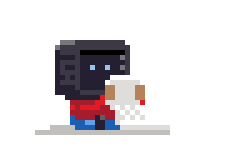Bats' 'run' helper returns with an exit code of 0 even when the command
that it was given to run failed with a non-zero exit code [1]. This is
to enable making further assertions about the command after 'run' has
finished. If there's nothing that checks for failures, then it will
continue as if everything is alright.
Therefore, currently, if 'podman logs' fails, there's no indication of
it and the test only fails later because it thinks that the container
failed to initialize:
not ok 106 container: Check container starts without issues
# (from function `assert_success' in file
test/system/libs/bats-assert/src/assert.bash, line 114,
# in test file test/system/103-container.bats, line 39)
# `assert_success' failed
#
# -- command failed --
# status : 1
# output :
# --
#
Instead, from now on, it will be more obvious:
not ok 106 container: Check container starts without issues
# (from function `assert_success' in file
test/system/libs/bats-assert/src/assert.bash, line 114,
# in test file test/system/103-container.bats, line 39)
# `assert_success' failed
#
# -- command failed --
# status : 125
# output (2 lines):
# Failed to invoke '/usr/bin/podman logs'
# Error: no container with name or ID "foo" found: no such container
# --
#
One alternative was to use 'assert_success' [2] to assert that the
command given to 'run' succeeded. That would show the 'podman logs'
failure as:
not ok 106 container: Check container starts without issues
# (from function `assert_success' in file
test/system/libs/bats-assert/src/assert.bash, line 114,
# in test file test/system/103-container.bats, line 39)
# `assert_success' failed
#
# -- command failed --
# status : 1
# output (29 lines):
#
# -- command failed --
# status : 125
# output : Error: no container with name or ID "foo" found: no such
container
# --
#
# ...
#
# -- command failed --
# status : 125
# output : Error: no container with name or ID "foo" found: no such
container
# --
# --
#
However, it's a bit too noisy because of the 'assert_success' not
terminating container_started() and continuing to loop for the remaining
attempts.
[1] https://bats-core.readthedocs.io/en/stable/writing-tests.html
[2] https://github.com/bats-core/bats-assert
https://github.com/containers/toolbox/pull/1372
|
||
|---|---|---|
| .github | ||
| data | ||
| doc | ||
| images | ||
| playbooks | ||
| profile.d | ||
| src | ||
| test | ||
| .codespellexcludefile | ||
| .gitignore | ||
| .gitmodules | ||
| .mailmap | ||
| .zuul.yaml | ||
| CODE-OF-CONDUCT.md | ||
| CONTRIBUTING.md | ||
| COPYING | ||
| gen-docs-list | ||
| GOALS.md | ||
| meson.build | ||
| meson_options.txt | ||
| meson_post_install.py | ||
| NEWS | ||
| README.md | ||
| SECURITY.md | ||
| toolbox | ||
Toolbox is a tool for Linux, which allows the use of interactive command line environments for development and troubleshooting the host operating system, without having to install software on the host. It is built on top of Podman and other standard container technologies from OCI.
Toolbox environments have seamless access to the user's home directory, the Wayland and X11 sockets, networking (including Avahi), removable devices (like USB sticks), systemd journal, SSH agent, D-Bus, ulimits, /dev and the udev database, etc..
This is particularly useful on OSTree based operating systems like Fedora CoreOS and Silverblue. The intention of these systems is to discourage installation of software on the host, and instead install software as (or in) containers — they mostly don't even have package managers like DNF or YUM. This makes it difficult to set up a development environment or troubleshoot the operating system in the usual way.
Toolbox solves this problem by providing a fully mutable container within
which one can install their favourite development and troubleshooting tools,
editors and SDKs. For example, it's possible to do yum install ansible
without affecting the base operating system.
However, this tool doesn't require using an OSTree based system. It works equally well on Fedora Workstation and Server, and that's a useful way to incrementally adopt containerization.
The toolbox environment is based on an OCI
image. On Fedora this is the fedora-toolbox image. This image is used to
create a toolbox container that offers the interactive command line
environment.
Note that Toolbox makes no promise about security beyond what's already available in the usual command line environment on the host that everybody is familiar with.
Installation & Use
See our guides on installing & getting started with Toolbox and Linux distro support.


